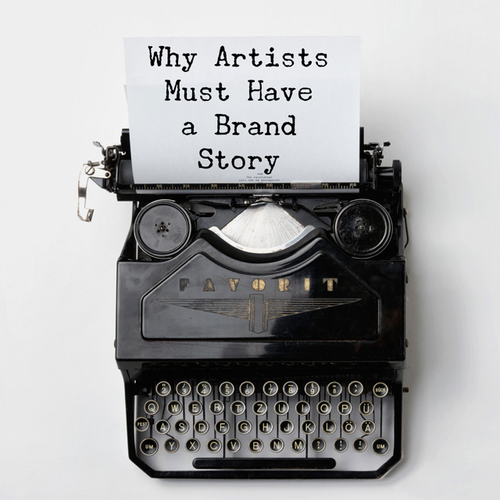by Carolyn Edlund
How can a well-written brand story reach out to your audience like nothing else?

If you want to know how to craft a compelling brand story that engages your audience, ask Daniel DiGriz, Marketing and Education Director for The Clark Hulings Fund for Visual Artists. A corporate storyteller who writes a Forbes column, hosts podcasts like The Thriving Artist™ and ClientPipe™, he is a charismatic speaker at national conferences, and leads organizations and entrepreneurs to find and deliver their brand narrative to motivated buyers and constituents.
We recently spoke about what artists need to know about branding, and why it matters to growing a business.
AS: Most artists simply think of themselves as an individual, as a person. When and why do you suggest they think of themselves in terms of a brand?
DD: A person is a brand; I don’t think we need to become a brand, but to discover that we are one. No matter how transparent we are and no matter how authentic, we don’t show everything to everyone at all times. The part we choose to show anyone is selective. That selectivity is what we mean by a brand. The other element is consistency. Our brand is what we consistently and selectively show to others.
AS: Many artists know that their story is important to potential collectors, and they often speak of their background, inspiration, and so forth. What is the difference between an artist story and a brand story?
DD: I think an artist story is for one’s self, whereas a brand story is for everyone else. People may not want to hear this, but the way most artist stories are told focuses on feelings, philosophy and personal attitude. They are about the self and one’s inner emotional life. But the problem is that collectors are not purchasing the artist’s emotional life.
In most cases, the difference between writing about feelings, attitudes and motivations and a brand story is that a brand story is all about the other person. The artist is one of the characters, the world is one of the characters, and the art is one of the characters – those are the “big three.”
A brand story is strongest when it evinces a “problem/solution” format. It describes a solution to a particular problem that the artist presents, i.e., a problem in the world (such as a misperception, an interpersonal issue, or a tangible problem like the deteriorating environment) in terms that people can easily understand and get behind. Then there is the solution that the artist brings, via the art. The art almost has the second ranking in the importance of the story.
The main character in an artist story is the artist. The main character in a brand story is the world; the secondary character is the art, and the artist is a minor character. This is the difference between the two. A brand story tells about the difference your art makes in the world.
A brand story tells about the difference your art makes in the world.
AS: How does a good brand story connect with the audience to draw them in and help them understand the artist and why their work matters?
DD: A brand story conjures up a big world of imagination for us; it’s not a hypothetical. Instead, a brand story might begin with a story apart from the art. It might say, “Stress is killing us, shortening our lives, distracting us from what is important in the world, and that has consequences.” This fleshes out the main character of the story, which is the world, and the trajectory it’s on. Then you can bring in the art. You can say “Art has the power to do something about this. Specifically, some art is capable of counteracting stress.” Then, explain how that happens, but not in an airy-fairy way. Once you have explained that, you can introduce why your specific art does this, in concrete ways that people understand. Then you have the beginning of a brand story.
AS: What is the process of writing a brand story? What are some pitfalls to avoid?
DD: The biggest pitfall is narcissism, and our tendency to be self-involved. This is because artists are alone when writing it. They test it on their family and friends, who are concerned about hurting their feelings. But actually, it needs to be tested in the marketplace, where people will give you an honest reaction.
One piece of advice: Don’t sit down and just write a brand story. It’s an evolution. You have to write it and write it and write it. People get confused about this. You don’t just spend a week or two and nail a brand story that will light up an audience. The whole brand story and the thinking behind it takes time.
Ultimately, a brand story must speak to the audience, not just about the artist. What makes people like you? When you tap into their deep-seated aspirations and their motivations. That’s the connection, the common ground. If you can do that, you’ve got a brand story.



well-said! “Don’t sit down and just write a brand story. It’s an evolution.”